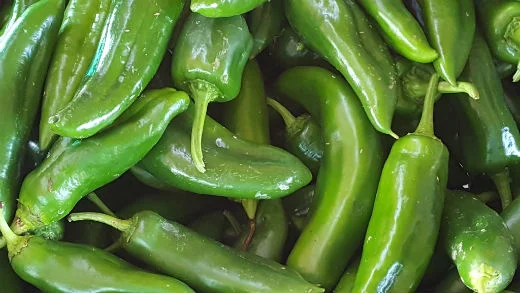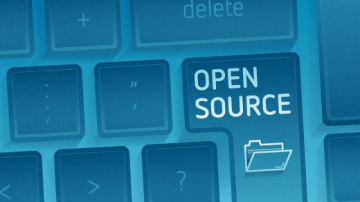Everyone has opinions and preferences, especially when it comes to food. To establish a criterion when answering "How spicy should a jalapeño be?." the Scoville Heat Scale was developed as a standard to measure spiciness. This scale allows people to communicate and share information about how spicy we like our peppers.
Similarly, open source technology standards, such as USB, I2C, MQTT, and others, were developed to enable global compatibility. Furthermore, open source hardware platforms have enabled communities to “speak the same language” without reinventing the wheel. For example, Raspberry Pi makes it easy for people to use their hardware as a baseline and then add onto it. This has created a revolution in many industries by enabling individuals, startups, and large corporations to apply hardware and software to complex problems without having to design them from the ground up.
MARSfarm: Using food to engage students in STEM
MARSfarm is a program that aims to increase students’ engagement with science, technology, engineering, and math (STEM) by relating agriculture to real-life problems, such as growing more food with fewer resources.
MARSfarm’s goal is to provide engaging material to inspire individuals and students to collaborate on solving big problems, like how we can sustainably survive on another planet, while simultaneously improving the food system here on our own planet. We do this by tying together the world of food and technology and enabling users to choose things like how spicy they want the jalapeño they are growing to be. More importantly, we want to alter other compounds besides spiciness (known as capsaicin by chemists), like Vitamin K, which is a concern for those who lack access to fresh fruits and vegetables, such as an astronaut living on Mars. With standardized open source hardware and software as a base, a user can focus on whatever unique objectives they have for their own “garden” while retaining the benefits of a larger community.
The importance of open source and standards
When trying to define standards with food, there is no “right” answer. Food is very personal and influenced by socioeconomic factors as well as (perhaps most importantly) geographical region.
We designed MARSfarm using open source principles to allow teachers to customize and add to the hardware and software in their classrooms. To make it more familiar and approachable, we tried to leverage existing standardized software and hardware platforms. By sticking with common software languages like Python and HTML and hardware like the Raspberry Pi, we reduce the potential barriers to entry for users who could be intimidated by a project of this magnitude. Other hardware we use, like PVC, Mylar, and full-spectrum LEDs, are globally accessible from brick-and-mortar storefronts and online retailers that adhere to industry standards to ensure consistency throughout the community.
By keeping our hardware and software standard, we can also create a marketplace where users can exchange “recipes” for growing food. Similar to how Thingverse has enabled anyone with a 3D printer to make just about anything—without having to be an engineer—simply by exchanging CAD files, we want to enable our users to find climate recipes from around the world and grow them—without having to be a botanist. The way to achieve this is by having a large number of people growing the same plant but with different climate factors. The more data that is aggregated, the better we’ll understand how different climate factors affect things like taste and the time it takes a plant to grow.
We also enlisted the support of open source agricultural projects where we’ve found many other individuals passionate about applying technology to optimize food. Another consistent source of innovation in agriculture has been NASA, which has achieved record harvests and been a point of collaboration between universities and countries for decades.
Building a food computer
Open source communities thrive when they’re applied to something both significant and personal. There is perhaps nothing more personal than the food we consume, the literal fuel that powers us.
Until very recently, even within the last decade, many plants could not be grown in certain regions due to lack of available light, which is the most fundamental input a plant requires for its most basic process, photosynthesis. With the advent of technologies like LEDs, organizations (other than NASA) can afford to grow just about anything, anywhere, within the bounds of what the market demands and will pay for.
As we continue living far away from where our food is produced, we continue to understand it less and less. When we forget our personal connection to food, we risk damaging not only our health but our communities and the planet where our species lives. To mitigate this risk, MARSfarm leads projects like the $300 Food Computer, which makes indoor growing systems more affordable and accessible. These types of projects also put more of this technology in more classrooms. The more that individuals and students work with these projects, the more data we’ll have, and the better we will understand the best ways to grow our food.
In fact, the improvement in lighting technology has been so dramatic that consumer products like Aerogarden have empowered thousands of individuals to grow edible plants at home, not only on their windowsills but on their countertops where there is no access to natural light.
Because of these leaps in technology, we’re developing a world where there are “libraries” of plants that can be “forked” onto devices to be grown by anyone. If you’d like to get started, please to visit our GitHub where we host software for all of our ongoing projects.
Help spread the word
We need your help to expose as many students as possible to the wonders of applying open source technology to agriculture. Please share this with at least one teacher you know and any students who have a passion for STEM. MARSfarm is actively working with open source contributors, recruiting employees, and conducting beta tests in schools.
For more information about what the farmers of tomorrow are doing with open tools and principles today, watch the video Farming for the Future.








1 Comment